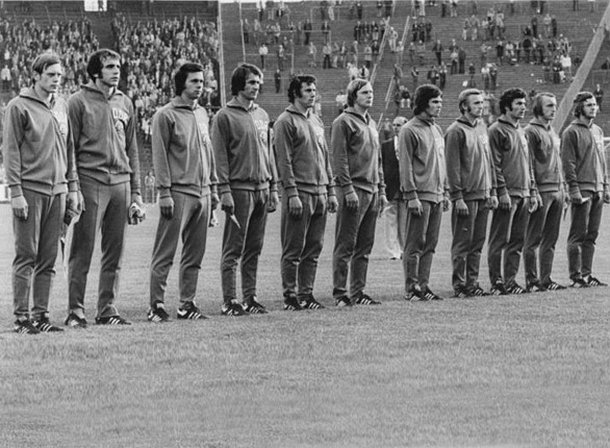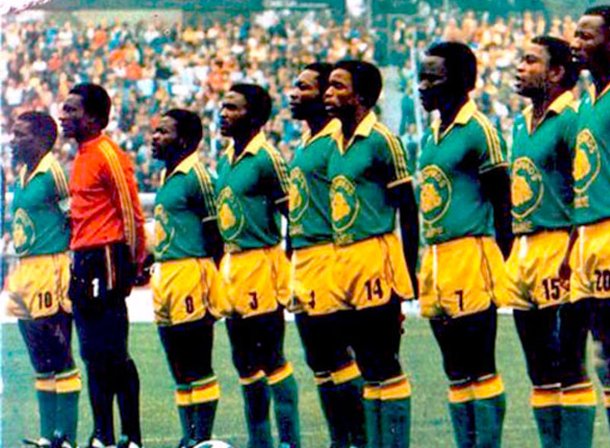A cada quatro anos, a Copa do Mundo entra no calendário esportivo e cria memórias afetivas, boas e ruins, para muitos amantes do futebol. A primeira delas foi realiza no distante ano de 1930, e muita coisa nesse período mudou, e não foi apenas o esporte. Algumas das nações que participaram do certame já não existem mais, por razões de fundo geopolítico.
Até mesmo um dos 18 países que já sediaram o campeonato da Fifa não existe mais. A Alemanha Ocidental se reunificou com a Oriental com queda do muro de Berlim, criando esse fato inusitado. Vamos aproveitar que é época de bola no campo para relembrar a história de alguns destes países que sumiram do mapa. Confira.
1. Iugoslávia
 (Fonte: Wikimedia Commons)
(Fonte: Wikimedia Commons)
Desta lista, a Iugoslávia foi uma das mais tradicionais seleções a participar da Copa do Mundo. Ao todo, o disputou nove edições do principal campeonato de futebol do mundo. Formado após o término da Primeira Guerra Mundial, em 1918, reunia diferentes povos, como eslovenos, croatas e sérvios.
Em 1963, foi rebatizado de República Socialista Federal da Iugoslávia, com seus integrantes. Quando a crise econômica e política levou à dissolução, as repúblicas que formavam a Iugoslávia se tornaram Estados Independentes, com o país chegando oficialmente ao fim em 1992. Sua melhor colocação foram dois quartos lugares, em 1930 e 1962.
2. Tchecoslováquia
 (Fonte: Radio Prague International/Reprodução)
(Fonte: Radio Prague International/Reprodução)
Outro país muito tradicional na história das Copas é a Tchecoslováquia. Ao todo, estiveram em 8 edições do certame. Localizada na região central da Europa, a nação também foi criada após o fim da Primeira Guerra Mundial e colapsou em 1992, dando origem à Tchéquia (antiga República Tcheca) e à Eslováquia.
Na Copa do Mundo, o país foi muito bem, sendo vice-campeão em 1934 (perdeu para a Itália) e 1962 (derrota para o Brasil). Após a dissolução do país, as duas novas nações foram à Copa do Mundo uma vez cada. A República Tcheca caiu na fase de grupos em 2006, enquanto a Eslováquia foi eliminada nas oitavas em 2010.
3. União Soviética
 (Fonte: FIFA/Reprodução)
(Fonte: FIFA/Reprodução)
Sim, mais uma nação socialista na lista. A União Soviética participou de sete edições da Copa do Mundo, sendo a primeira delas em 1958. Os embates com o Brasil, inclusive, foram sempre duros, mesmo com a vitória brasileira em ambos. Quando o país foi desmembrado, no fim de 1991, 15 países surgiram.
Destes, apenas dois mantêm relativa tradição no esporte: Rússia e Ucrânia, curiosamente os países envolvidos em um conflito bélico que retirou a primeira do evento e dificultou a tentativa de vaga da segunda.
4. Alemanha Oriental
 (Fonte: Wikimedia Commons)
(Fonte: Wikimedia Commons)
Antes da Alemanha que conhecemos, o país era dividido em dois, no período da Guerra Fria. A parte mais “fraca” do escrete atual correspondia à Alemanha Oriental, que participou de apenas uma Copa do Mundo, a de 1974, na vizinha Ocidental.
Inclusive, as duas seleções jogaram nesta edição, com vitória da Oriental por 1 a 0, o que pode até ser considerado uma zebra. Para sorte da Ocidental, eles conseguiram se recuperar da derrota e vencer a Copa daquele ano. Os dois viraram um só com a queda do muro de Berlim, em 1989.
5. Zaire
 (Fonte: Band/Reprodução)
(Fonte: Band/Reprodução)
Antes de se tornar República Democrática do Congo, o que aconteceu em 1997, existia a República do Zaire, que surgiu em 1971, após o golpe militar comandado por Mobutu Sese Seko. Na edição de 1974, na Copa que ocorreu na também extinta Alemanha Ocidental, o país fez sua única aparição.
Foram três derrotas, com direito a um 9 a 0 para a Iugoslávia e um 3 a 0 para o Brasil. Aliás, o jogo com a Canarinho é cercado de história: os jogadores haviam sido ameaçados pelo ditador do Zaire de morte se perdessem de quatro gols de diferença para o Brasil.
Fonte: MegaCurioso.